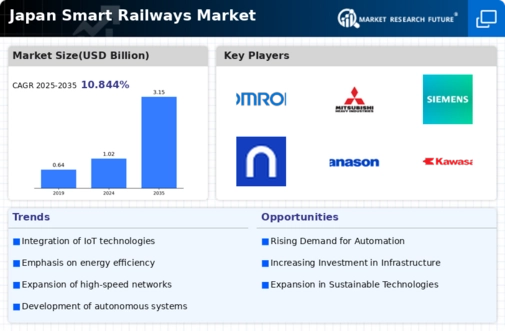Japan Smart Railways Market Summary
The Japan Smart Railways Market is projected to grow significantly from 1.02 USD Billion in 2024 to 3.15 USD Billion by 2035.
Key Market Trends & Highlights
Japan Smart Railways Market Key Trends and Highlights
- The market is expected to experience a compound annual growth rate (CAGR) of 10.79% from 2025 to 2035.
- By 2035, the market valuation is anticipated to reach 3.15 USD Billion, indicating robust growth potential.
- In 2024, the market is valued at 1.02 USD Billion, reflecting a strong foundation for future expansion.
- Growing adoption of smart technologies due to increasing urbanization is a major market driver.
Market Size & Forecast
| 2024 Market Size | 1.02 (USD Billion) |
| 2035 Market Size | 3.15 (USD Billion) |
| CAGR (2025-2035) | 10.79% |
Major Players
East Japan Railway, Omron, Mitsubishi Heavy Industries, Siemens, NEC, Panasonic, Kawasaki Heavy Industries, Hitachi, West Japan Railway, Fujitsu, Central Japan Railway, Alstom, Nippon Signal



















Leave a Comment